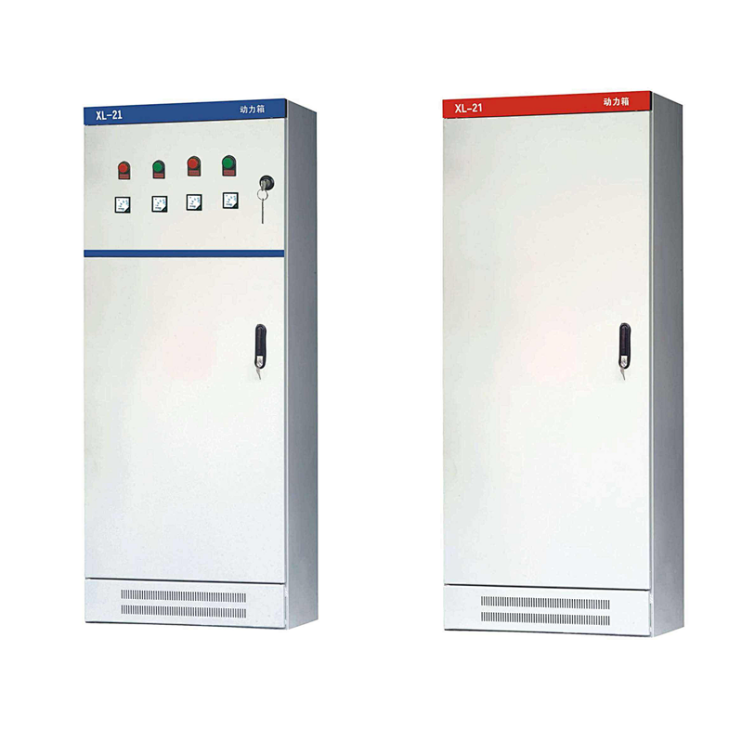How to Build High-Reliability Power Distribution Cabinets?

A Guide to 11 Key Component Selection & Protection Design
As the core equipment of industrial automation and power distribution systems, the internal structural design of power cabinets directly affects equipment stability, energy efficiency management, and intelligence level. Let’s take a detailed look at the internal structure of the power cabinet, which includes 11 key factors. Please refer to the following analysis.
Internal Structure of Power Distribution Cabinets: Components, Technologies, and Smart Solutions
1. Enclosure (Protection & EMC Design)
Material: Made of cold-rolled steel or galvanized steel (anti-corrosion), with stainless steel enclosures used in high-end applications (e.g., chemical plants, marine environments).
Features:
IP protection rating (e.g., IP54 dust/waterproof) ensures reliability in harsh conditions (dust, humidity).
EMC shielding minimizes interference from VFDs and servo drives, complying with IEC 61439 standards.
Case Study: Power cabinets in solar PV plants require salt spray testing for outdoor corrosion resistance.
2. Busbars (Efficient Power Transmission)
Material: Copper busbars (>98% conductivity) or aluminum busbars (lightweight, cost-effective), with tin/silver plating for oxidation resistance.
Innovations:
Modular busbar systems for tool-free installation (e.g., data center power distribution).
IoT-enabled temperature monitoring via wireless sensors to prevent overheating.
3. Circuit Breakers (Intelligent Protection)
Types:
MCB (Miniature Circuit Breaker): Branch circuit overload protection.
ACB (Air Circuit Breaker): Main incoming protection with remote tripping (smart release).
Industry Trends:
Selective coordination + arc fault detection (AFCI) prevents total shutdown during faults (e.g., semiconductor fabs).
4. Contactors (Motor Control)
Function: PLC-controlled motor start/stop/reversing. Energy-efficient models (e.g., permanent magnet contactors) reduce coil power consumption.
Application: Conveyor sorting systems use VFD + contactor groups for multi-speed motor control.
5. Thermal Overload Relays (Motor Protection)
Upgrade: Traditional bimetallic strips are being replaced by electronic overload relays (e.g., Schneider TeSys) with precise current settings and fault logging.
6. Fuses (Short-Circuit Protection)
Selection:
gG/gL type (general purpose) vs. aR type (fast-acting for semiconductors).
High-voltage DC fuses for EV charging stations and energy storage systems.
7. Instrument Transformers (Monitoring & Metering)
Smart Features:
Rogowski coils for wide-frequency measurement (e.g., VFD circuits).
Merging Units (MU) enable digital grid interfaces (IEC 61850 protocol).
8. Metering Devices (Digital Monitoring)
Trends:
Multi-function meters with RS485/MODBUS for Energy Management Systems (EMS).
Harmonic analysis compliant with IEEE 519 (e.g., hospital precision equipment).
9. Control Buttons & Indicators (HMI)
Design:
Explosion-proof buttons (Ex d) for oil/gas industries.
Touchscreen HMIs replace traditional buttons for real-time visualization.
10. Terminal Blocks (Efficient Wiring)
Innovations:
Spring-cage terminals for tool-less installation.
Double-layer terminals save space (e.g., rail transit cabinets).
11. Secondary Circuits (Smart Core)
Integration:
PLC + cloud platforms enable remote maintenance (predictive analytics).
Fiber-optic communication replaces copper for EMI immunity (e.g., steel mill controls).
Future Trends: Smart & Green Power Distribution
AI-driven diagnostics: Edge computing + sensors predict failures (busbar temperature, breaker lifespan).
Energy efficiency: SVG-based reactive compensation reduces losses, supporting carbon neutrality.
Modularity: Scalable designs for rapid capacity expansion (e.g., renewable energy plants).
With digital twin and 5G connectivity, power cabinets are evolving from passive devices into smart grid hubs!
